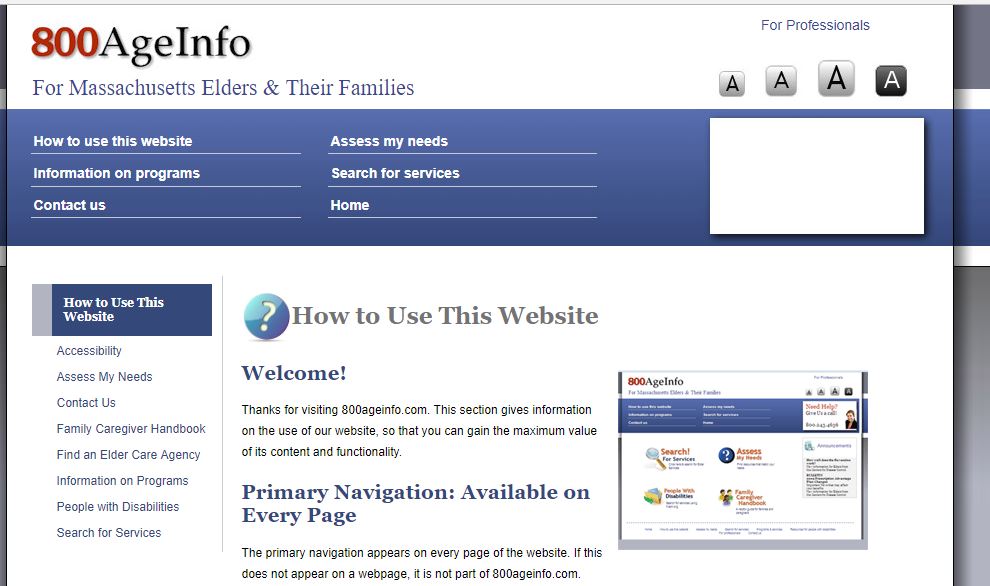Melissa Bailey, Kaiser Health News
Used by permission
BOSTON — After back-to-back, eight-hour shifts at a chiropractor’s office and a rehab center, Nirva arrived outside an elderly woman’s house just in time to help her up the front steps.
Nirva took the woman’s arm as she hoisted herself up, one step at a time, taking breaks to ease the pain in her hip. At the top, they stopped for a hug.
“Hello, bella,” Nirva said, using the word for “beautiful” in Italian.
“Hi, baby,” replied Isolina Dicenso, the 96-year-old woman she has helped care for for seven years.
The women each bear accents from their homelands: Nirva, who asked that her full name be withheld, fled here from Haiti after the 2010 earthquake. Dicenso moved here from Italy in 1949. Over the years, Nirva, 46, has helped her live independently, giving her showers, changing her clothes, washing her windows, taking her to her favorite parks and discount grocery stores.
Now Dicenso and other people living with disabilities, serious illness and the frailty of old age are bracing to lose caregivers like Nirva due to changes in federal immigration policy.
Nirva is one of about 59,000 Haitians living in the U.S. under Temporary Protected Status (TPS), a humanitarian program that gave them permission to work and live here after the January 2010 earthquake devastated their country. Many work in health care, often in grueling, low-wage jobs as nursing assistants or home health aides.
Now these workers’ days are numbered: The Trump administration decided to end TPS for Haitians, giving them until July 22, 2019, to leave the country or face deportation.
In Boston, the city with the nation’s third-highest Haitian population, the decision has prompted panic from TPS holders and pleas from health care agencies that rely on their labor. The fallout offers a glimpse into how changes in immigration policy are affecting older Americans in communities around the country, especially in large cities.
Ending TPS for Haitians “will have a devastating impact on the ability of skilled nursing facilities to provide quality care to frail and disabled residents,” warned Tara Gregorio, president of the Massachusetts Senior Care Association, which represents 400 elder care facilities, in a letter published in The Boston Globe. Nursing facilities employ about 4,300 Haitians across the state, she said.
“We are very concerned about the threat of losing these dedicated, hardworking individuals, particularly at a time when we cannot afford to lose workers,” Gregorio said in a recent interview. In Massachusetts, 1 in 7 certified nursing assistant (CNA) positions are vacant, a shortage of 3,000 workers, she said.
Nationwide, 1 million immigrants work in direct care — as CNAs, personal care attendants or home health aides — according to the Paraprofessional Healthcare Institute, a New York-based organization that studies the workforce. Immigrants make up 1 in 4 workers, said Robert Espinoza, PHI’s vice president of policy. Turnover is high, he said, because the work is difficult and wages are low. The median wage for personal care attendants and home health aides is $10.66 per hour, and $12.78 per hour for CNAs. Workers often receive little training and leave when they find higher-paying jobs at retail counters or fast-food restaurants, he said.
The country faces a severe shortage in home health aides. With 10,000 baby boomers turning 65 each day, an even more serious shortfall lies ahead, according to Paul Osterman, a professor at Massachusetts Institute of Technology’s Sloan School of Management. He predicts a national shortfall of 151,000 direct care workers by 2030, a gap that will grow to 355,000 by 2040. That shortage will escalate if immigrant workers lose work permits, or if other industries raise wages and lure away direct care workers, he said.
Nursing homes in Massachusetts are already losing immigrant workers who have left the country in fear, in response to the White House’s public remarks and immigration proposals, Gregorio said. Nationally, thousands of Haitians have fled the U.S. for Canada, some risking their lives trekking across the border through desolate prairies, after learning that TPS would likely end.
Employers are fighting to hold on to their staff: Late last year, 32 Massachusetts health care providers and advocacy groups wrote to the Department of Homeland Security urging the acting secretary to extend TPS, protecting the state’s 4,724 Haitians with that special status.
“What people don’t seem to understand is that people from other countries really are the backbone of long-term care,” said Sister Jacquelyn McCarthy, CEO of Bethany Health Care Center in Framingham, Mass., which runs a nursing home with 170 patients. She has eight Haitian and Salvadoran workers with TPS, mostly certified nursing assistants. They show up reliably for 4:30 a.m. shifts and never call out sick, she said. Many of them have worked there for over five years. She said she already has six CNA vacancies and can’t afford to lose more.
“There aren’t people to replace them if they should all be deported,” McCarthy said.
Nirva works 70 hours a week taking care of elderly, sick and disabled patients. She started working as a CNA shortly after she arrived in Boston in March 2010 with her two sons.
She chose this work because of her harrowing experience in the earthquake, which destroyed her home and killed hundreds of thousands, including her cousin and nephew. After the disaster, she walked 15 miles with her sister, a nurse, to a Red Cross medical station to try to help survivors. When she got there, she recounted, the guards wouldn’t let her in because she wasn’t a nurse. Nirva spent an entire day waiting for her sister in the hot sun, without food or water, unable to help. It was “very frustrating,” she said.
“So, when I came here — I feel, people’s life is very important,” she said. “I have to be in the medical field, just to be able to help people.”
The work of a CNA or home health aide — which includes dressing and changing patients and lifting them out of bed — was difficult, she found.
“At the beginning, it was very tough for me,” Nirva said, especially “when I have to clean their incontinence. … Some of them, they have dementia, they are fighting. They insult you. You have to be very compassionate to do this job.”
A few months ago, Nirva was injured while tending to a 285-pound patient who was lying on her side. Nirva said she was holding the patient up with one hand while she washed her with the other hand. The patient fell back on her, twisting Nirva’s wrist.
Injury rates for nursing assistants were more than triple the national average in 2016, federal labor statistics show. Common causes were falling, overexertion while lifting or lowering, and enduring violent attacks.
Nirva works with a soft voice, a bubbling laugh and disarming modesty, covering her face with both hands when receiving a compliment. She said her faith in God — and a need to pay the bills to support her two sons, now in high school and college — help her get through each week.
She started caring for Dicenso in her Boston home as the older woman was recovering from surgery in 2011. Like many older Americans, Dicenso doesn’t want to move out of her home, where she has lived for 63 years. She is able to keep living there, alone, with help from her daughter, Nirva and another in-home aide. She now sees Nirva once a week for walks, lunch outings and shopping runs. The two have grown close, bonding in part over their Catholic faith. Dicenso gushed as she described spending her 96th birthday with Nirva on a daylong adventure that included a Mass at a Haitian church. At home, Dicenso proudly displays a bedspread that Nirva gave her, emblazoned with the word LOVE.
On a recent sunny winter morning, Nirva drove Dicenso across town to a hilltop clearing called Millennium Park.
“What a beautiful day!” Dicenso declared five times, beholding the open sky and views of the Charles River. As she walked with a cane in one hand and Nirva’s hand firmly clasped in the other, Dicenso stopped several times due to pain in her hips.
“Thank God I have her on my arm,” Dicenso said. “Nirva, if I no have you on my arm, I go face-down. Thank God I met this woman.”
In addition to seeing Dicenso, Nirva works three shifts a week at a chiropractor’s office as a medical assistant. Five nights a week, she works the overnight shift, from 11 p.m. to 7 a.m., at a rehabilitation center in Boston run by Hebrew SeniorLife. CEO Louis Woolf said Hebrew SeniorLife has 40 workers with TPS, out of a total of 2,600.
It’s not clear how many direct care workers rely on TPS, but PHI calculates there are 34,600 who are non-U.S. citizens from Haiti, El Salvador, Nicaragua (for which TPS is ending next year) and Honduras, whose TPS designation expires in July. In addition, another 11,000 come from countries affected by Trump’s travel ban, primarily from Somalia and Iran, and about 69,800 are non-U.S. citizens from Mexico, PHI’s Espinoza said. Even immigrants with secure legal status may be affected when family members are deported, he noted. Under Trump, non-criminal immigration arrests have doubled.
The “totality of the anti-immigrant climate” threatens the stability of the workforce — and “the ability of older people and people with disabilities to access home health care,” Espinoza said.
Asked about the impact on the U.S. labor force, a DHS official said that “economic considerations are not legally permissible in TPS decisions.” By law, TPS designation hinges instead on whether the foreign country faces adverse conditions, such as war or environmental disaster, that make it unsafe for nationals to return to, the official said.
The biggest hit to the immigrant workforce that cares for older patients may come from another program — family reunification, said Robyn Stone, senior vice president of research at LeadingAge, an association of nonprofit groups that care for the elderly. Trump is seeking to scrap the program, which he calls “chain” migration, in favor of a “merit-based” policy.
Osterman, the MIT professor, said the sum of all of these immigration policy changes may have a serious impact. If demand for workers exceeds supply, he said, insurers may have to restrict the number of hours of care that people receive, and wages may rise, driving up costs.
“People aren’t going to be able to have quality care,” he said. “They’re not going to be able to stay at home.”
But since three-quarters of the nation’s direct care workers are U.S. citizens, then “these are clearly not ‘jobs that Americans won’t do,’” argued David Ray, spokesman for the Federation for American Immigration Reform, which supports more restrictive immigration policies. The U.S. has 6.7 million unemployed people, he noted. If the health care industry can’t find anyone to replace workers who lose TPS and DACA, he said, “then it needs to take a hard look at its recruiting practices and compensation packages. There are clearly plenty of workers here in the U.S. already who are ready and willing to do the work.”
Angelina Di Pietro, Dicenso’s daughter and primary caretaker, disagreed. “There’s not a lot of people in this country who would take care of the elderly,” she said. “Taking care of the elderly is a hard job.”
“Nirva, pray to God they let you stay,” said Dicenso, sitting back in her living-room armchair after a long walk and ravioli lunch. “What would I do without you?”
Kaiser Health News (KHN) is a national health policy news service. It is an editorially independent program of the Henry J. Kaiser Family Foundation which is not affiliated with Kaiser Permanente.


 In case you missed it: Not Massachusetts based but worth noting.
In case you missed it: Not Massachusetts based but worth noting.
